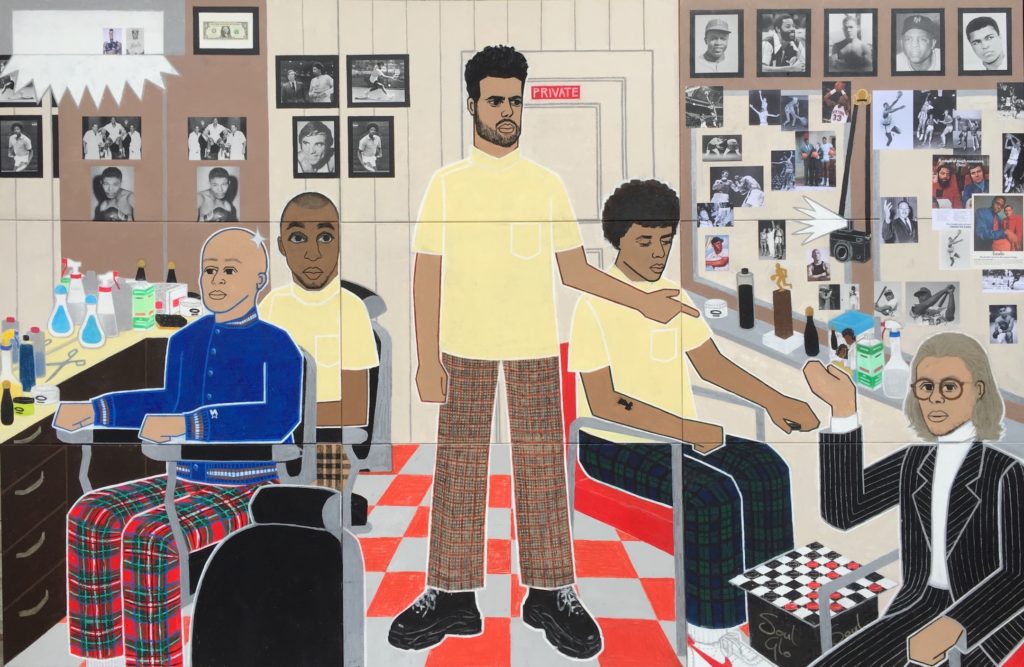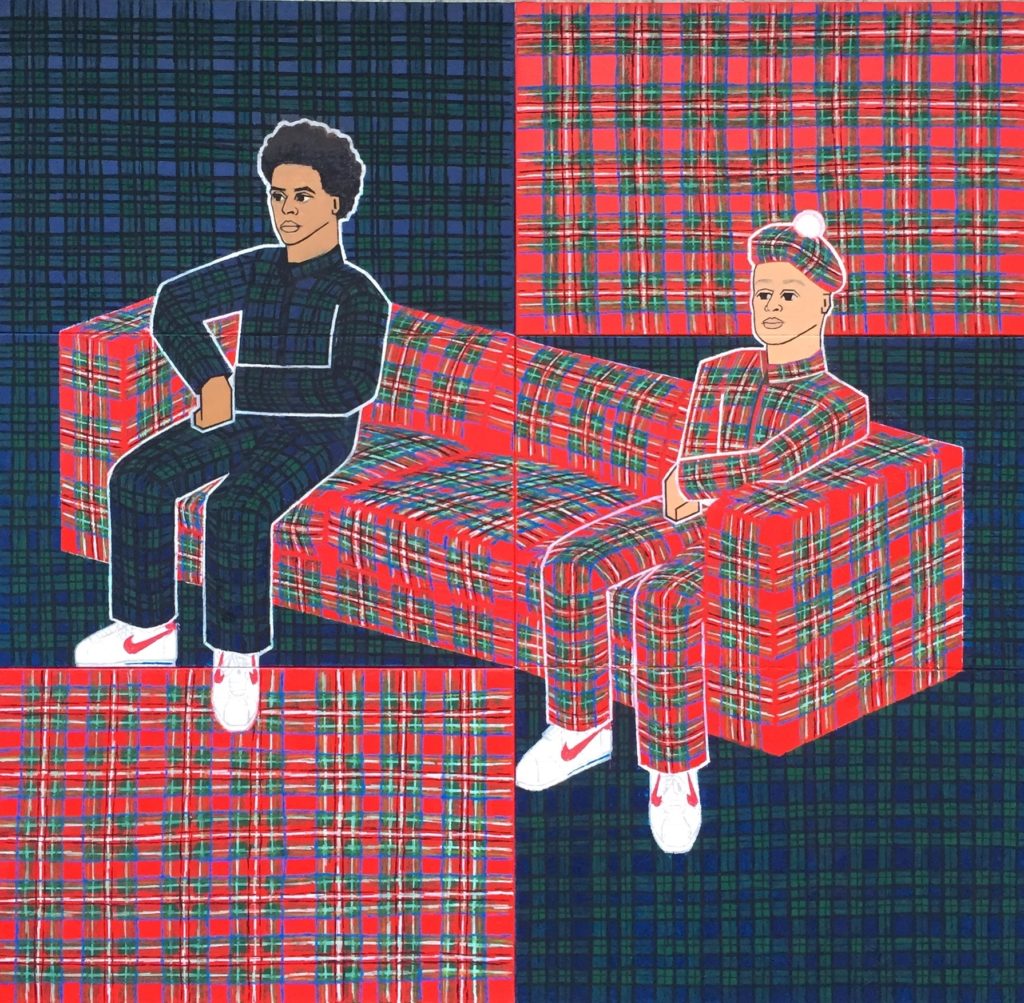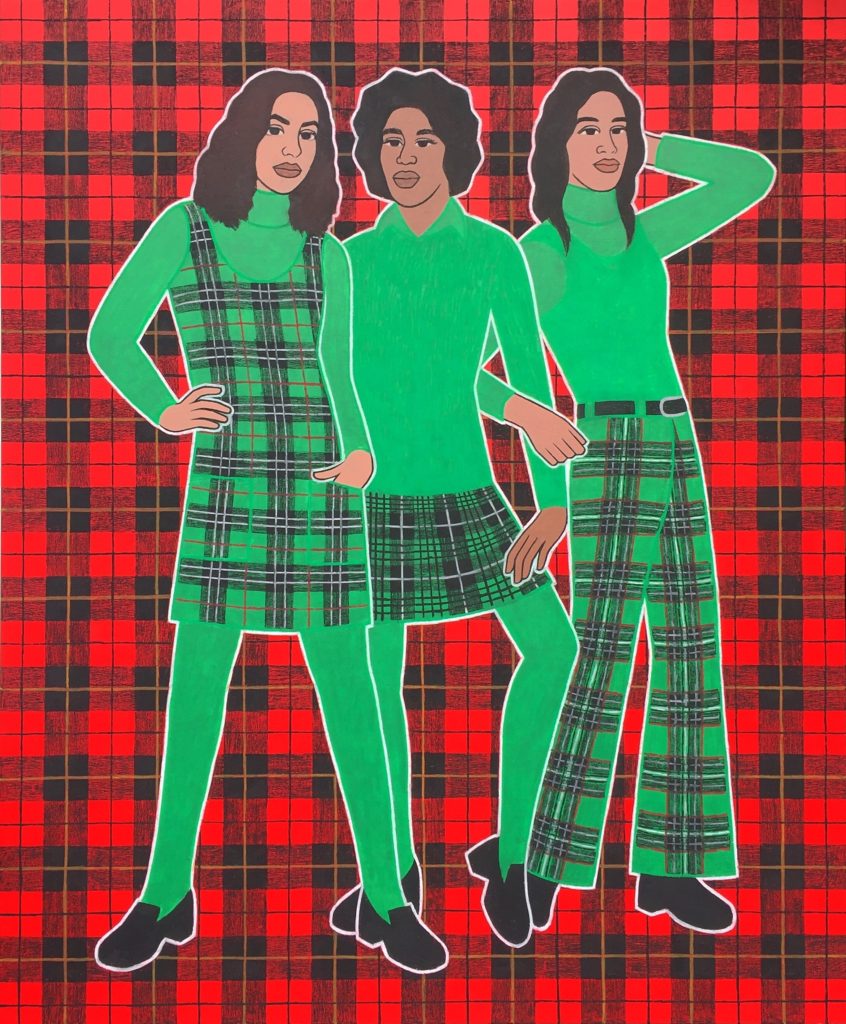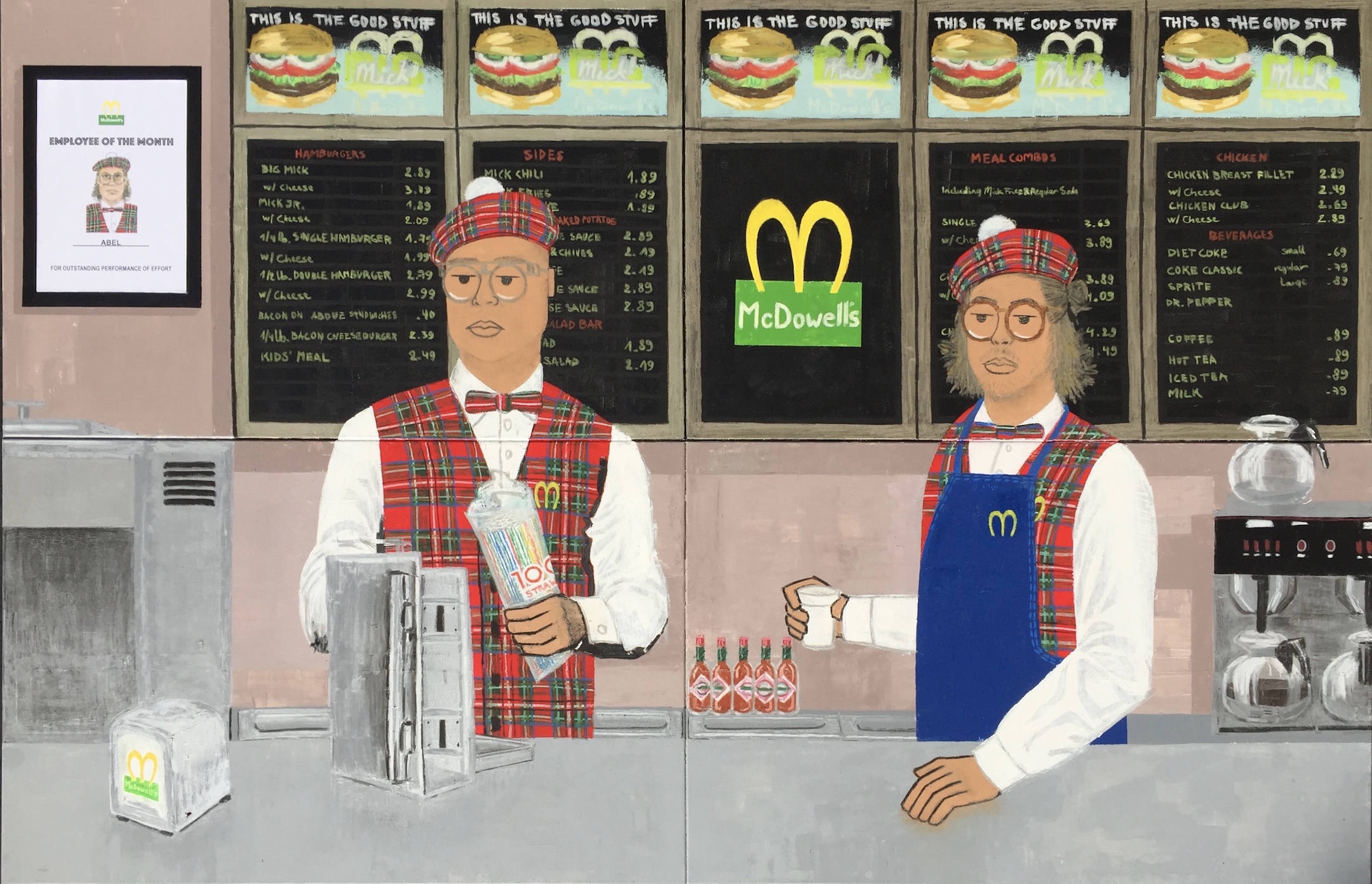Roland Garros, Mr. Clean, Moschino, and Vans are just a few of the many clever references in the paintings of Loïc Devaux. A young Belgian contemporary artist, Devaux is based in Antwerp, where he creates works of art that immediately grab one’s attention with their beauty and wit.
I first noticed Devaux’s distinct aesthetic while scrolling through Instagram a few months back. A fantastic art advisory based in Los Angeles called Penske Projects featured a painting of his that depicts a group of people dressed in red plaid standing against a green plaid background. The stark contrast between the two colors caught my eye, and I’ve been in love with Devaux’s paintings ever since. Last week, I had the chance to interview the up-and-coming artist, and it is an honor to feature Loïc Devaux on The Zeitgeist. Be sure to follow him on Instagram @loic_devaux. You won’t be sorry– his posts will surely brighten your Instagram feed every day.
You include your family and friends in many of your paintings. Are these works inspired by real-life experiences or memories with these people at all?
That’s exactly what they’re about! I’m glad you noticed. I started out doing biographical paintings of images of friends and family, most of them simply reflecting on events or memories. Eventually, I ran out of images, and I began making works after comments and mockery. That’s how the paintings of safaris and pajama parties came about.

I love that you include references to contemporary brands and events in your work, such as Vans, Moschino, and Roland Garros. How do you decide which ones to feature?
The Roland Garros painting you’re referring to is a portrait of my mom who likes to watch tennis. It was remarkable to me how many logos there were in the game, so I decided to put both together. The unofficial collaboration with Mr. Clean came about because of my friend who was getting called out for wearing a Mr. Clean-inspired Moschino shirt. Most of the references simply happen by accident, but I always try to copy brands as closely as possible, just so people are able to relate to the work.

Do you have a favorite painting or set of paintings that you’ve created?
My favorite paintings would be the “Coming to America” series inspired by the 1988 film with Eddie Murphy and Arsenio Hall. Most of the works are exact representations of the story, but the characters have been replaced by friends and myself because the scenario would hold a similarity to what was going on in my life at the time. They scream of an ambition I had back then to leave a life of comfort behind and move to New York. I’m truly looking forward to the sequel.

What is your creative process like?
I used to paint directly from photographs and memories, but as I obviously didn’t have a picture for everything I’ve been through, I began making up scenes, for which I would draw a little sketch first. Later, I started thinking of what was significant to my work in order to keep things going. That’s how I stumbled upon plaid fashion ads from the 70s and recently decided to take it further by using interiors as a source material and fill them with vibrant colors and patterns.

Are you largely self-taught, or did you attend arts school?
I would say I’m largely self-taught. I did attend an arts high school but graduated in applied arts, mostly working on graphic design. I didn’t take what I was doing seriously until I discovered painting in my final year. I went on to study fine arts in college, but it didn’t work out, mostly because of the lack of space I was given both physically and mentally, so I left without a degree.

When did you realize you wanted to become an artist?
I’ve been busy on the creative tip as long as I can remember, but it wasn’t until my senior year of high school that I truly discovered painting. I already knew about iconic artists such as Picasso, Dali and Mondrian– of whom I can recall doing class presentations in middle school– but they’ve never managed to fully grab my attention. Basquiat was able to do so after I discovered his work through art history. It made me see painting in a completely different way, where there was no need for a capability of photorealistic representation.

How would you describe your art?
Naive and playful in looks, but reasoned and serious in ideas.

Who are some of your strongest artistic influences?
Recently, furniture design has caught my interest, so I’ve been looking at people such as Verner Panton, Charles & Ray Eames, and Gaetano Pesce.

You’re based in Antwerp. Does living in the city influence your work at all?
It used to. Many of my earlier paintings are set in Antwerp and/or reflect on personal events that have happened over here. As my work has become more Americanized, there are no traces of the city left in my recent work. I might have to rekindle it in the future considering the rich history of painting and fashion over here.
What were some challenges you encountered when first launching your career as an artist, and how did you overcome them?
Trying to take my career seriously while still in school. I was getting opportunities to show and sell some work, but at the same time, I was being told what to do in class. I felt like it was limiting my ambitions, so I ended up spending more time in the studio. Even after showing up with an amount of paintings that would’ve made a great gallery show, the [school] couldn’t let me pass because my assignment work was insufficient. I already had a residency scheduled in LA, so I was determined not to go back.
What’s next for you?
I’m currently looking for a place to combine work and living where I could paint as much as possible. It would allow me to put out a large body of works that would show my capability in order to get new opportunities.
